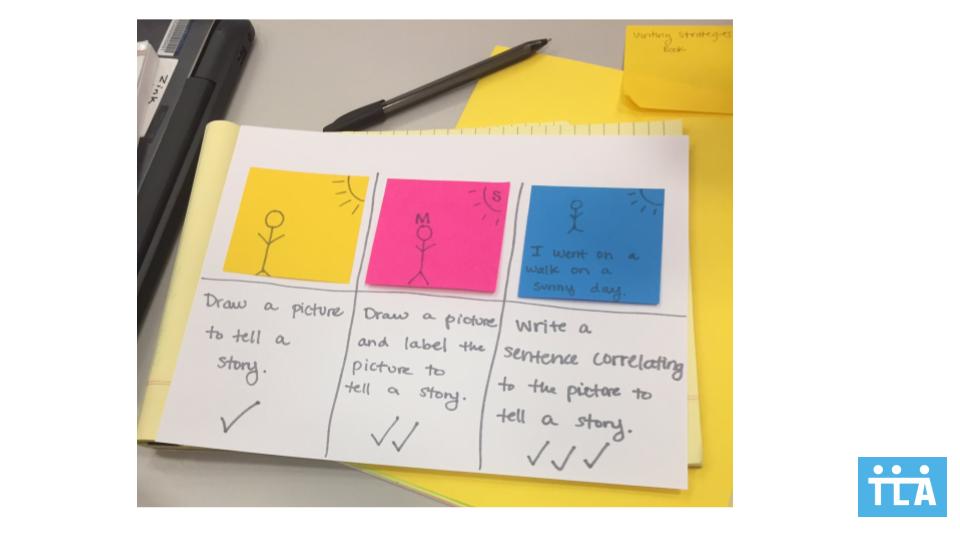We all want our students to make meaningful growth in their reading and writing. But too often we get stuck with supporting our students and our feedback is generic rather than specific.
By using a student facing tool like a microprogression we can show our students exactly what we hope they will apply in their reading or writing and give them the concrete steps to make the progress they are capable of.
In this short blog, we will answer the following questions:
- What is a micro-progression?
- How can you create your own micro-progressions?
- What are ways you can use a micro-progression in your classroom?
What is a micro-progression?
A micro-progression is a tool (often teacher created) that can be use to model for students expectation of a larger goal broken down into skill levels. It includes:
- A snapshot of skills on a development framework (can be reading, writing or even math!)
- Narrows a big goal down to 3 skill levels that represent a range in your class
- Provides quick examples that illustrate each level
- Includes clear, brief descriptions of each level
- Teaching-ready, kid-facing, assessment-ready

How can you create your own micro-progressions?
- Chose a goal that you want to unpack (example: Elaboration in Writing)
- Read through a progression to see how that goal grows across years with special attention for your grade and the one below & above
- Highlight the distinctions in language as the work grows. These will be your “look fors” that you will name for students.
- Create a rating system (one star, two star, three stars; good, better, best)
- Name the “Look fors” that go with each rating system. Write down these on the top part of your micro-progression.
- Now do the work yourself! What does it sound like when a writer/reader uses this skill? Write down your sample on the bottom part of your micro-progression.

What are ways you can use a micro-progression in your classroom?
Micro-progressions can be used whole-class, in small group settings or in 1:1 conferences with students.
Consider creating a micro-progression with your students toward the end of unit as you are getting the class to look back over their work with fresh eyes. By co-constructing this tool you have an exemplar that models for all students steps they can take to improve.
In a small group you can use this tool to have students either self-assess and create goals. Alternatively, you could show a micro-progression to students and have them try out the skill in their writing while you coach into their work.
Finally when meeting with students for conferences micro-progressions are great to have in your toolkit. Check lists and other rubrics can be overwhelming, but this visual tool tends to inspire students towards growth rather than give them a list of things to do.

Micro-progressions are simple and effective tools as you teach your students. We are confident that once you start using them you’ll want to make them for every unit to support your writers (and readers!)
Let us know how it goes!
Join Our List and Stay in the Know!
Join our growing list of educators to receive updates on our upcoming events, initiatives and exclusive resources.






